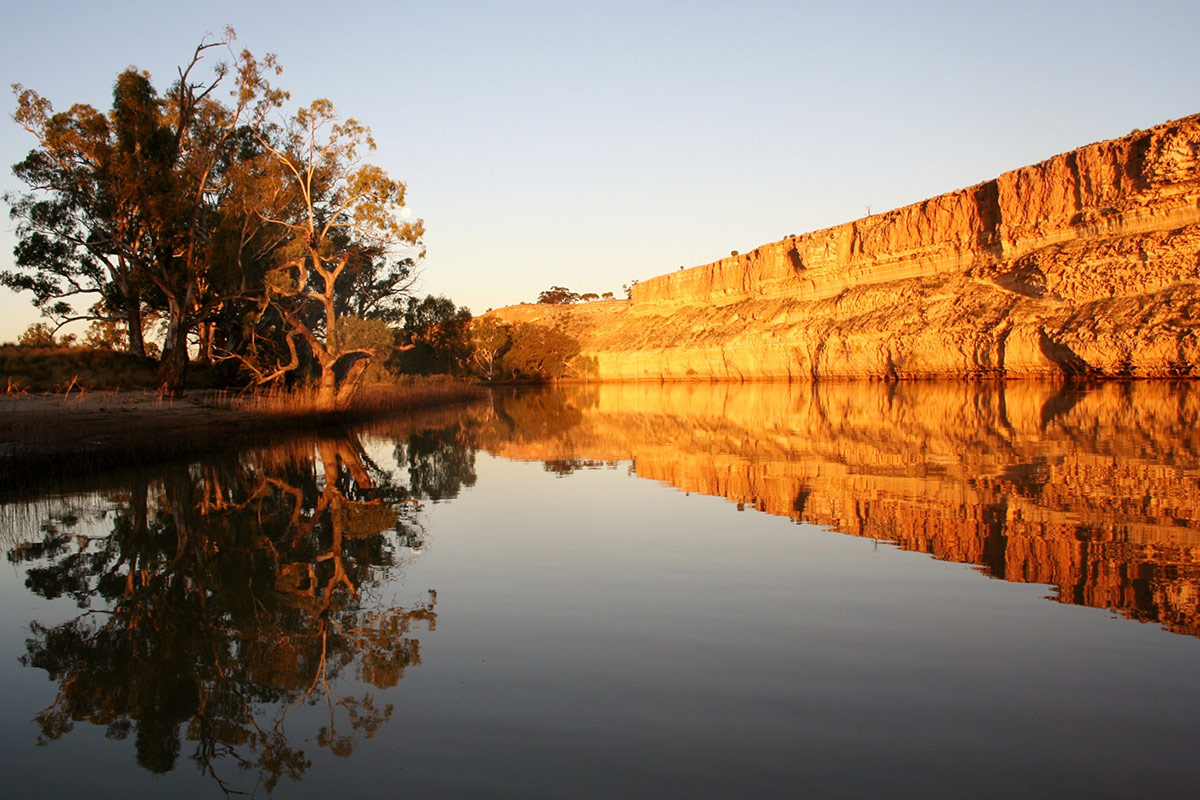
Understanding how much water is recharged into aquifers and the connection between aquifers and rivers is crucial for water management in the Murray-Darling Basin – and is the subject of new water research in the Murray-Darling Basin led by Flinders University.
The importance of Flinders University’s leading scientific water research is highlighted on World Water Day (22 March 2019) with the release of the final report of the three-year, multi-million dollar Strategic Groundwater Research Partnership between the Murray-Darling Basin Authority and the National Centre for Groundwater Research and Training (NCGRT), headquartered at Flinders University.
NCGRT Director Flinders University Professor Craig Simmons says a key feature of the report is a call for improved understanding of hydrologic processes, groundwater models and underpinning data.
The Matthew Flinders Distinguished Professor of Hydrogeology says groundwater models are uncertain.
“Understanding, quantifying, managing, reducing and communicating this uncertainty is critical” Professor Simmons says.
“Comprehending what data can be used to reduce uncertainty and improve confidence in model predictions is key. This, in turn, helps to make well-informed decisions about water management in the Basin” he says.
Groundwater provides more than 30% of Australia’s total water consumption and generates national economic activity worth in excess of $34 billion a year across agriculture, mining and industry (Deloitte Access Economics, 2013).
The research outlined in the new report studied four critical areas of water science and management in the Murray-Darling Basin:
- How recharge occurs into groundwater aquifers and how to reduce uncertainty of recharge estimates. “This is important because recharge is the input of water into the groundwater system and a key component of the water balance and computer modelling – a crucial component for managing groundwater. Understanding what data we should collect to reduce uncertainty in recharge estimates is vitally important,” says Professor Simmons.
- Improving understanding of poorly understood connections between surface water and groundwater. This is critical for conjunctive management of surface water and groundwater. There is the potential for water to be allocated twice if the connections between rivers and aquifers are not properly understood. “As an example, a bore located right near a river may be counted as a groundwater allocation when it is only a few metres from the river and is almost certainly pulling water from the river,” Professor Simmons says. “Understanding the connections between rivers and aquifers is important for holistic, integrated, conjunctive water management – where surface water and groundwater are considered in the same connected framework. Understanding the types of data that help to determine the connectivity between rivers and aquifers is crucial. It also allows us to be much more strategic about data collection and get the ‘best bang for buck’.”
- Better management of groundwater systems. While recharge is a key component of the water balance, managing groundwater relies on knowing much more than the recharge to the aquifer. “Sustainable yield in a groundwater system is a complex and complicated problem and it means not only knowing recharge but also discharge and important flows to the environment such as to rivers, which sustain vital groundwater-dependent ecosystems. It must ensure that groundwater extraction does not create unacceptable social, environmental, or economic consequences.”
- Establishing critical social, economic and environmental triple bottom lines for integrated groundwater management – which involves integrated assessments that include crucial socioeconomic studies. “Understanding critical socioeconomic drivers are a vital part of integrated groundwater management in the Basin. Science is necessary but alone is insufficient.”

“This is all about better science and social science to underpin better management and policy in the Murray-Darling Basin, and the successful implementation of the Murray-Darling Basin Plan,” says Professor Simmons.
He notes that valuable lessons learned from this Murray-Darling Basin Partnership are applicable to other key water sources. “These issues are common to many other groundwater and water management problems in Australia and internationally,” he says.
Groundwater as a resource has much to offer in supporting sustainable development around the world with 97% of freshwater on Earth is groundwater. It supplies half of the world’s drinking water and 43% of the water used to irrigate crops.
However, groundwater depletion and pollution are enormous and pressing global issues. UNESCO reports current global groundwater extraction is approaching 1000 km3/year – more than 13 times the annual flow over the entire Niagara Falls – and it shows no sign of slowing.
Recent studies have also shown that groundwater depletion is occurring at a rate that exceeds replenishment and that one-third of the world’s major aquifers are under serious stress.
In its Global Risks 2015 Report, the World Economic Forum ranks water crises as the number one risk in terms of impact to society – ahead of weapons of mass destruction, spread of infectious disease, failure of climate change adaptation and fiscal crises.
Flinders University was recently ranked 12th in the world in Water Resources in the 2018 Academic Ranking of World Universities subject rankings. It is home to the National Centre for Groundwater Research and Training, co-founded as a Centre of Excellence of the Australian Research Council and the National Water Commission. The latest MDBA report will be available on the NCGRT website to coincide with the UN-declared World Water Day 2019.

